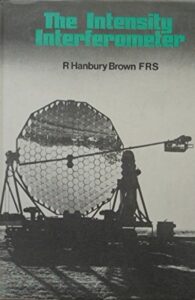He is perhaps best known for his invention of the optical intensity interferometer. This was not only a brilliant conception in itself, but also proved a crucial factor in the advancement of the understanding of fundamental physical optics.

The Intensity Interferometer









